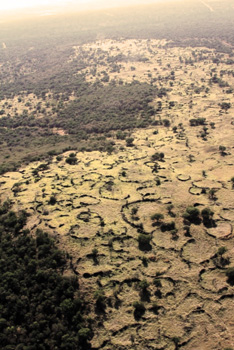


The people of the North West are predominantly Baswana in origin speaking the Setswana language.
Molokwane is truly special as every littlepiece of historic evidencehas remained of the once mighty Bakwena Bamodimosana Bammatau tribe. Their origins can be traced back over many centuries and document a turbulent history of war and migration across the plainsand valleys which border the great Kalahari.

 Molokwane is an important iron-age archaeological site, and actually is the largest in South Africa, situated at Selonskraal west of Rustenburg. Using a combination of archaeology and oral tradition, Dr. Julius Pistorius has shown that the site is associated with early Tswana settlement in the North West province, possibly as early as 1600.
Molokwane is an important iron-age archaeological site, and actually is the largest in South Africa, situated at Selonskraal west of Rustenburg. Using a combination of archaeology and oral tradition, Dr. Julius Pistorius has shown that the site is associated with early Tswana settlement in the North West province, possibly as early as 1600.
It is notable for the extensive stone-wall constructions around the town. More specifically, he established that Molokwane was occupied by related BakwenaBamodimosana communities, in particular the BaMmatau during the Late Iron Age. Furthermore, Molokwane has a settlement style that is representative of the settlement system of historical and contemporary Sotho-Tswana villages in its ground plan, composition and settlement layout. It is probable that Molokwane grew rapidly during the late eighteenth century, and is considered a prime example of a number of settlements associated with factions of the baKwenabaModimosana which indicate the development of sizable towns ruled by men with significant political power.
Molokwane is closely associated with the rise to power of the baKwenabaMmatau ruler Kgaswane, who ruled between 1770 and 1828, a development that is reflected also in the oral record.